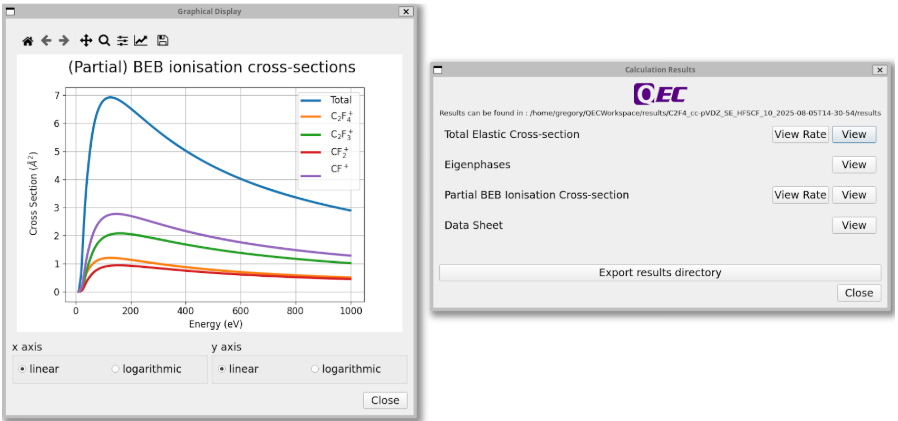Ever wonder what happens when a speedy electron slams into a molecule? It’s not a gentle bump! The impact can be so intense that it kicks one of the molecule’s electrons out, fundamentally changing the molecule. This high-impact process is called ionisation. In some cases, however, the collision is so energetic that it not only removes an electron but also breaks the molecule apart into smaller fragments. This is called dissociative ionisation.
For scientists modeling plasma chemistry, accurately predicting these fragmentation patterns is critical. The precise fragments produced, and their relative probabilities, directly influence the overall chemical reactions within the plasma. This is why a new update to QEC, Quantemols’ software suite for prediction of chemical behavior using Quantum Mechanics, is so significant. The latest version offers a more detailed, fragment-specific view of these ionisation events, moving beyond the traditional whole-molecule approach.
Getting Specific
Previously, QEC could only calculate ionisation processes as a whole using the Binary-Encounter Bethe (BEB) method. The new QEC 2.0 release takes this a step further by offering a modified version of the BEB method that can calculate partial ionisation cross sections for each of the fragments.
To achieve this, QEC 2.0 leverages data from the NIST (National Institute of Standards and Technology) mass spectrum. This data provides two key pieces of information essential for determining exactly which bonds are likely to break during an electron collision, and for calculating the partial ionisation cross sections:
- Branching ratio: This tells us how likely it is for a specific fragment to be produced.
- Appearance energy: This is the minimum energy required to produce a certain fragment.
How it Works
Users can activate this new feature by clicking the “Calculate Partial BEB ionisation cross-section” button on the Cross Sections to Calculate page of the QEC GUI. Once you click this option, you’ll be prompted to upload a CSV file containing the necessary branching ratios and appearance energies.
quantum chemical calculations, often making larger atoms such as iodine too complex to handle.

Figure 1: The new ‘Calculate Partial BEB ionisation cross-section’ option. Once clicked, users are prompted to upload a CSV file containing branching ratios and appearance energies.
The format for this file is straightforward. Each row in the file lists the fragment name, its branching ratio, and its appearance energy in electron volts (eV).
After you’ve uploaded your data, QEC will run the calculation. When it’s finished, the “Partial BEB ionisation cross-section” will be listed on the calculation results page. Clicking “View” will generate a plot of the cross sections, providing a clear visual of the fragmentation patterns.

Figure 2: The calculated partial ionisation cross sections for C2F4 (left). The partial BEB ionisation cross section is now viewable in the Calculation Results window (right).
This new capability in QEC 2.0 gives researchers a more precise tool for understanding and modeling the complex world of plasma chemistry, offering a deeper and more accurate view of how molecules break down.
Visit quantemol.com to learn more, or contact us for a quick chat about your needs. And don’t forget to follow Quantemol on LinkedIn for more updates!
By Greg Armstrong & Annie Laver

Dr Greg Armstrong
PRINCIPAL COMPUTATIONAL MOLECULAR PHYSICIST

Annie Laver
SCIENTIFIC COMMUNICATIONS ADMINISTRATOR
